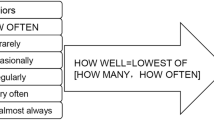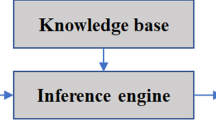Abstract
A novel scheme for diagnosing sensor failures in a flight control system is presented. In the proposed scheme, a set of self-organizing fuzzy systems named as extended sequential adaptive fuzzy inference systems (ESAFISs) are applied as the online approximators for recognizing the sensor outputs. ESAFIS is an online learning fuzzy system with concurrent structure and parameter learning. The rules of the ESAFIS are added or deleted based on the input data without predefining them by trial and error. From an analysis of the residual signals between the estimated states and the measurements of the sensors, the failure diagnosis by determining the failure detection, identification and accommodation can be achieved. The efficiency of the proposed scheme is demonstrated by simulation examples where hard and soft failures in the angular rate gyros are successfully diagnosed.









Similar content being viewed by others
References
Campa G, Fravolini ML, Seanor B, Napolitano MR, Gobbo DD, Yu G, Gururajan S (2002) On-line learning neural networks for sensor validation for the flight control system of a B777 research scale model. Int J Robust Nonlinear Control 12:987–1007
Huang GB, Liang NY, Rong HJ, Saratchandran P, Sundararajan N (2005) On-line sequential extreme learning machine. In: The IASTED international conference on computational intelligence (CI’05), Calgary
Napolitano MR, Neppach C (1995) Neural-network-based scheme for sensor failure detection, identification and accommodation. J Guid Control Dyn 6(18):1280–1286
Napolitano MR, Windon DA, Casanova JL, Innocenti M, Silvestri G (1998) Kalman filters and neural-network schemes for sensor validation in flight control systems. IEEE Trans Control Syst Technol 6(5):596–611
Nguyen LT, Ogburn ME, Gilbert WP, Kibler KS, Brown PW, Deal PL (1979) Simulator study of stall/post-stall characteristics of a fighter airplane with relaxed longitudinal static stability. NASA Technical Paper 1538
Pashilkar AA, Sundararajan N, Saratchandran P (2006) A fault-tolerant neural aided controller for aircraft auto-landing. Aerosp Sci Technol 10(1):49–61
Rong HJ, Sundararajan N, Huang GB, Saratchandran P (2006) Sequential adaptive fuzzy inference system (SAFIS) for nonlinear system identification and prediction. Fuzzy Sets Syst 157(9):1260–1275
Rong HJ, Huang GB, Sundararajan N, Saratchandran P (2009) Online sequential fuzzy extreme learning machine for function approximation and classification problems. IEEE Trans Syst Man Cybern Part B Cybern 39(4):1067–1072
Rong HJ, Sundararajan N, Huang GB, Zhao GS (2011) Extended sequential adaptive fuzzy inference system for classification problems. Evol Syst 2:71–82
Sundararajan N, Saratchandran P, Yan L (2001) Fully tuned radial basis function neural networks for flight control. Kluwer academic publishers, Boston
Takagi T, Sugeno M (1985) Fuzzy identification of systems and its applications for modeling and control. IEEE Trans Syst Man Cybern 15(1):116–132
Yingwei L, Sundararajan N, Saratchandran P (1997) A sequential learning scheme for function approximation and using minimal radial basis neural networks. Neural Comput 9(2):461–478
Acknowledgments
This work is funded in part by National Science Council of ShaanXi Province (Grant No. 2014JM8337), National Natural Science Foundation of China (Grant No. 61004055) and the Fundamental Research Funds for the Central Universities.
Author information
Authors and Affiliations
Corresponding author
Rights and permissions
About this article
Cite this article
Lin, Q., Wang, X. & Rong, HJ. Self-organizing fuzzy failure diagnosis of aircraft sensors. Memetic Comp. 7, 243–254 (2015). https://doi.org/10.1007/s12293-015-0167-9
Received:
Accepted:
Published:
Issue Date:
DOI: https://doi.org/10.1007/s12293-015-0167-9




